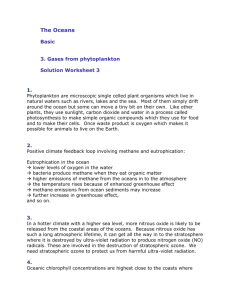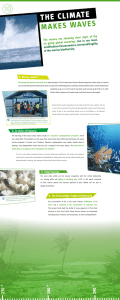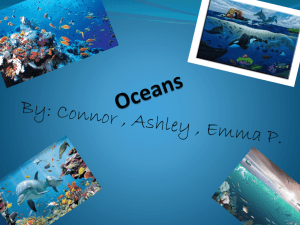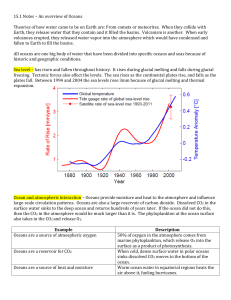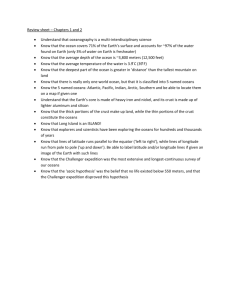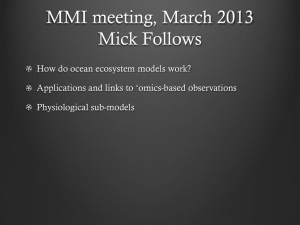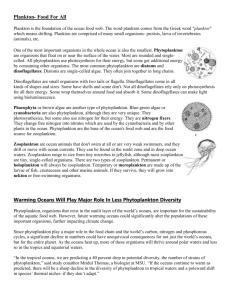The Oceans
advertisement
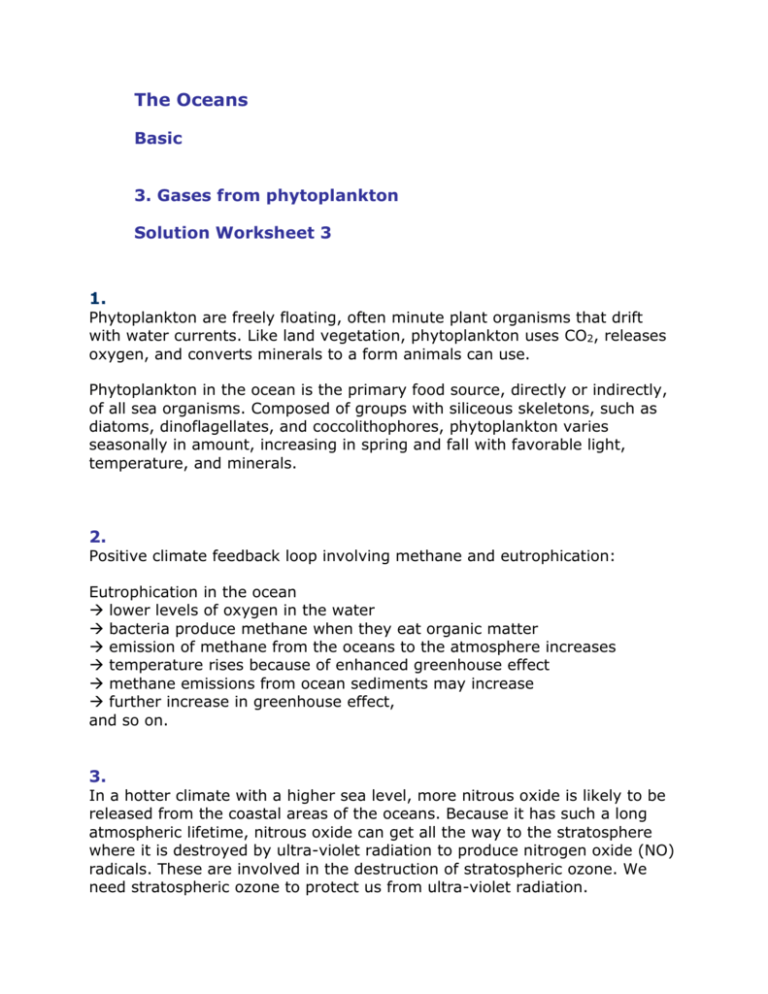
The Oceans Basic 3. Gases from phytoplankton Solution Worksheet 3 1. Phytoplankton are freely floating, often minute plant organisms that drift with water currents. Like land vegetation, phytoplankton uses CO2, releases oxygen, and converts minerals to a form animals can use. Phytoplankton in the ocean is the primary food source, directly or indirectly, of all sea organisms. Composed of groups with siliceous skeletons, such as diatoms, dinoflagellates, and coccolithophores, phytoplankton varies seasonally in amount, increasing in spring and fall with favorable light, temperature, and minerals. 2. Positive climate feedback loop involving methane and eutrophication: Eutrophication in the ocean lower levels of oxygen in the water bacteria produce methane when they eat organic matter emission of methane from the oceans to the atmosphere increases temperature rises because of enhanced greenhouse effect methane emissions from ocean sediments may increase further increase in greenhouse effect, and so on. 3. In a hotter climate with a higher sea level, more nitrous oxide is likely to be released from the coastal areas of the oceans. Because it has such a long atmospheric lifetime, nitrous oxide can get all the way to the stratosphere where it is destroyed by ultra-violet radiation to produce nitrogen oxide (NO) radicals. These are involved in the destruction of stratospheric ozone. We need stratospheric ozone to protect us from ultra-violet radiation. 4. Chlorophyll concentrations are great in ocean areas with a rich supply of fresh water (such as near the estuaries of great rivers and in places such as the sea between Sweden, Finland and the Baltic countries). Concentrations are smaller in the middle of oceans, far from coasts.
